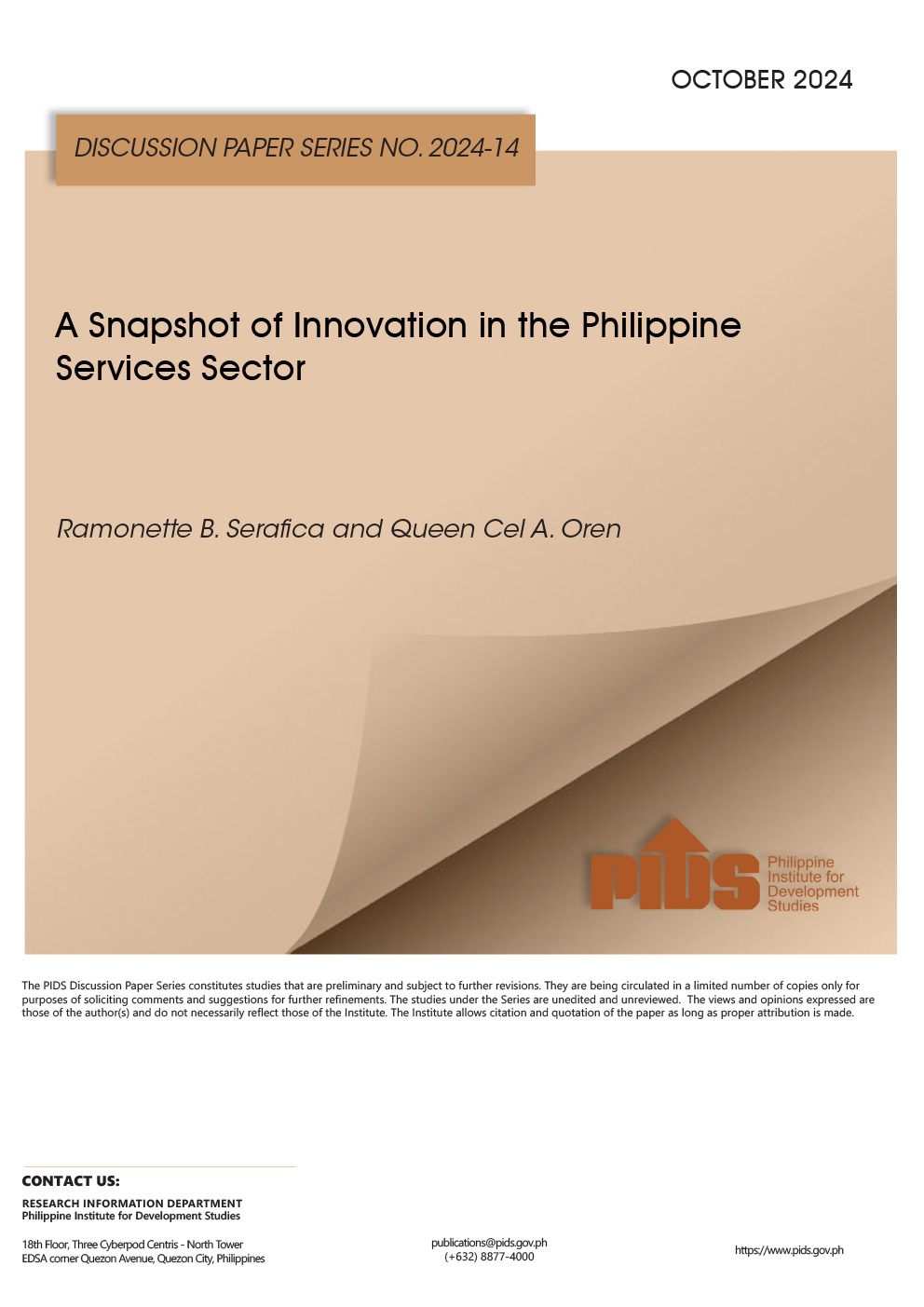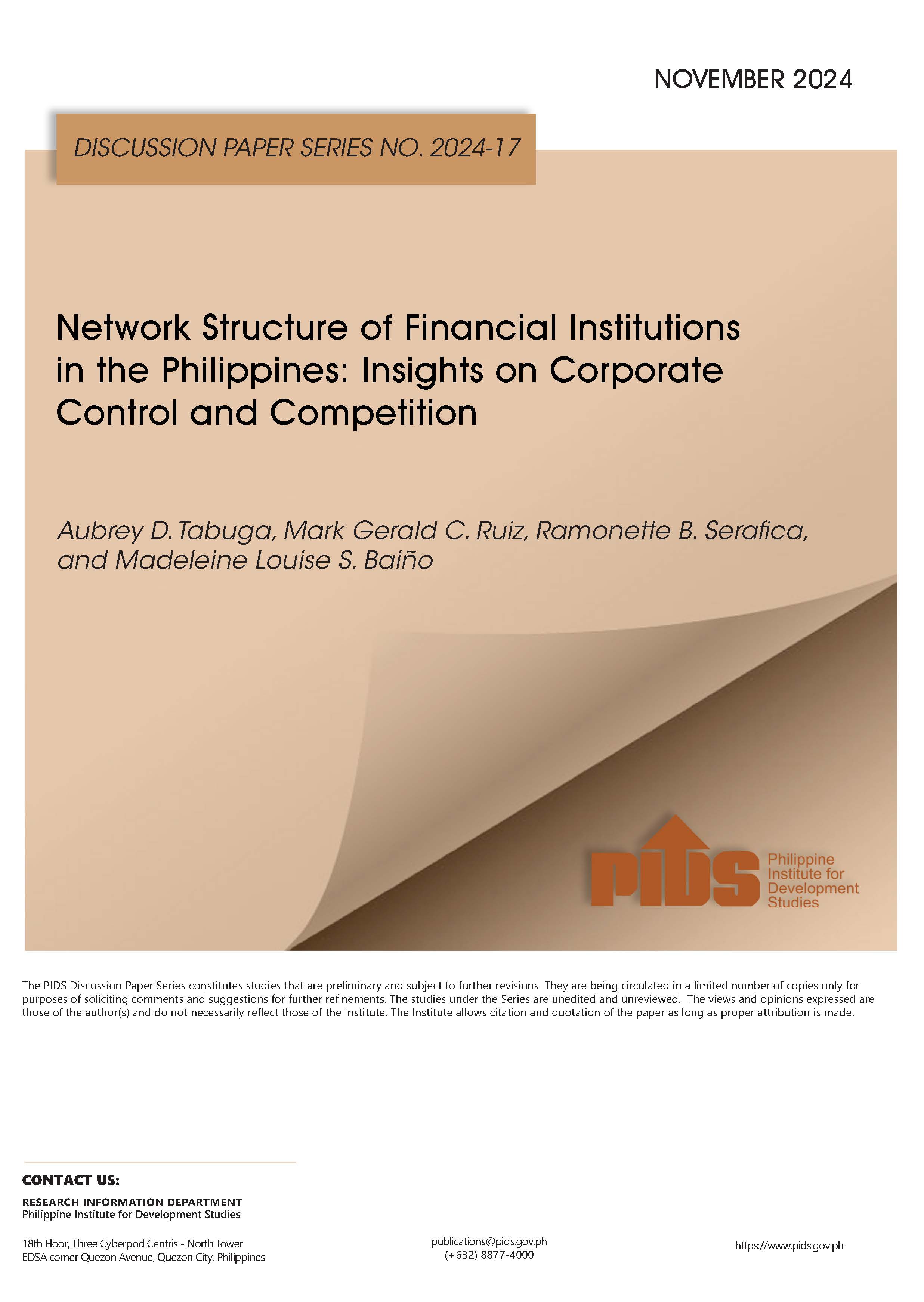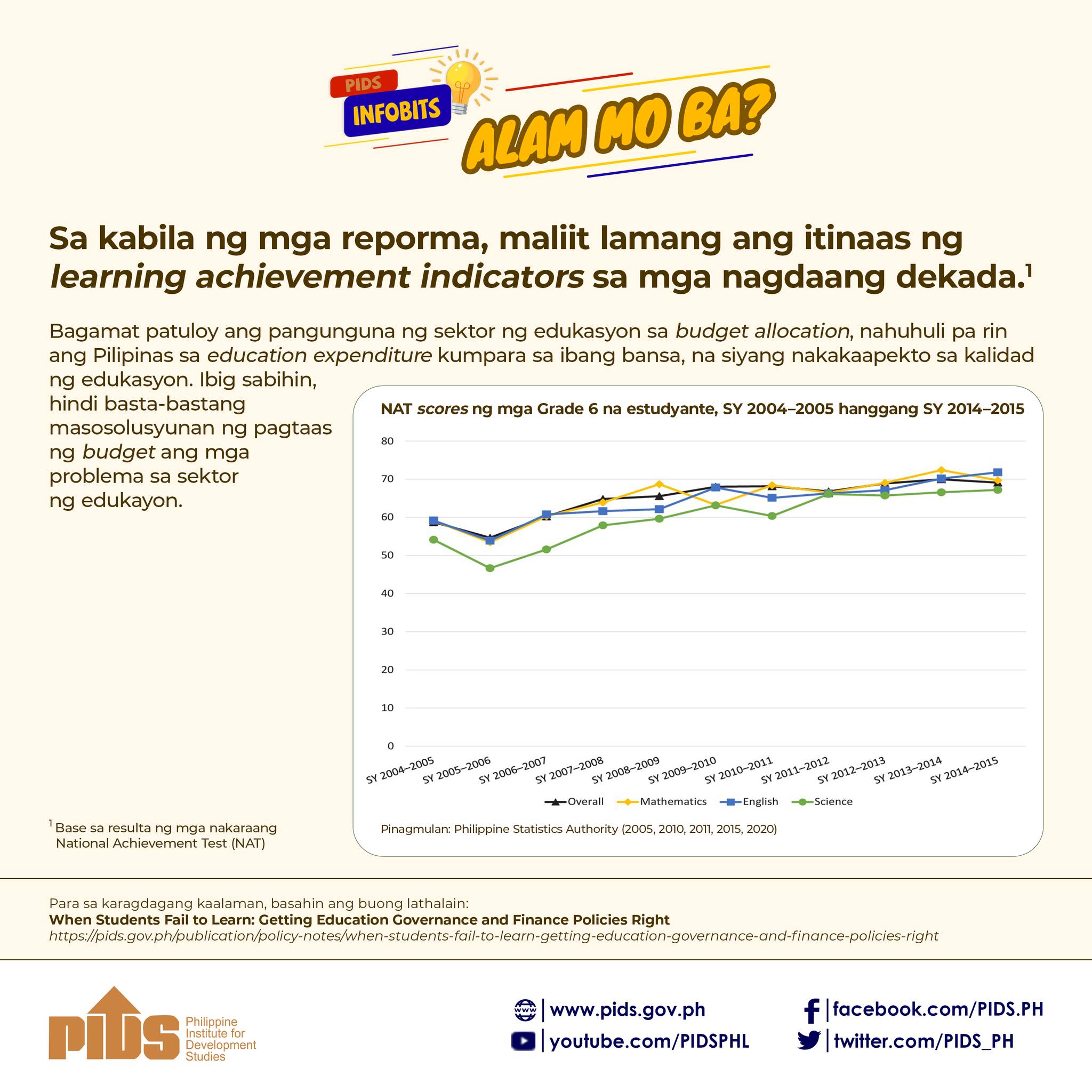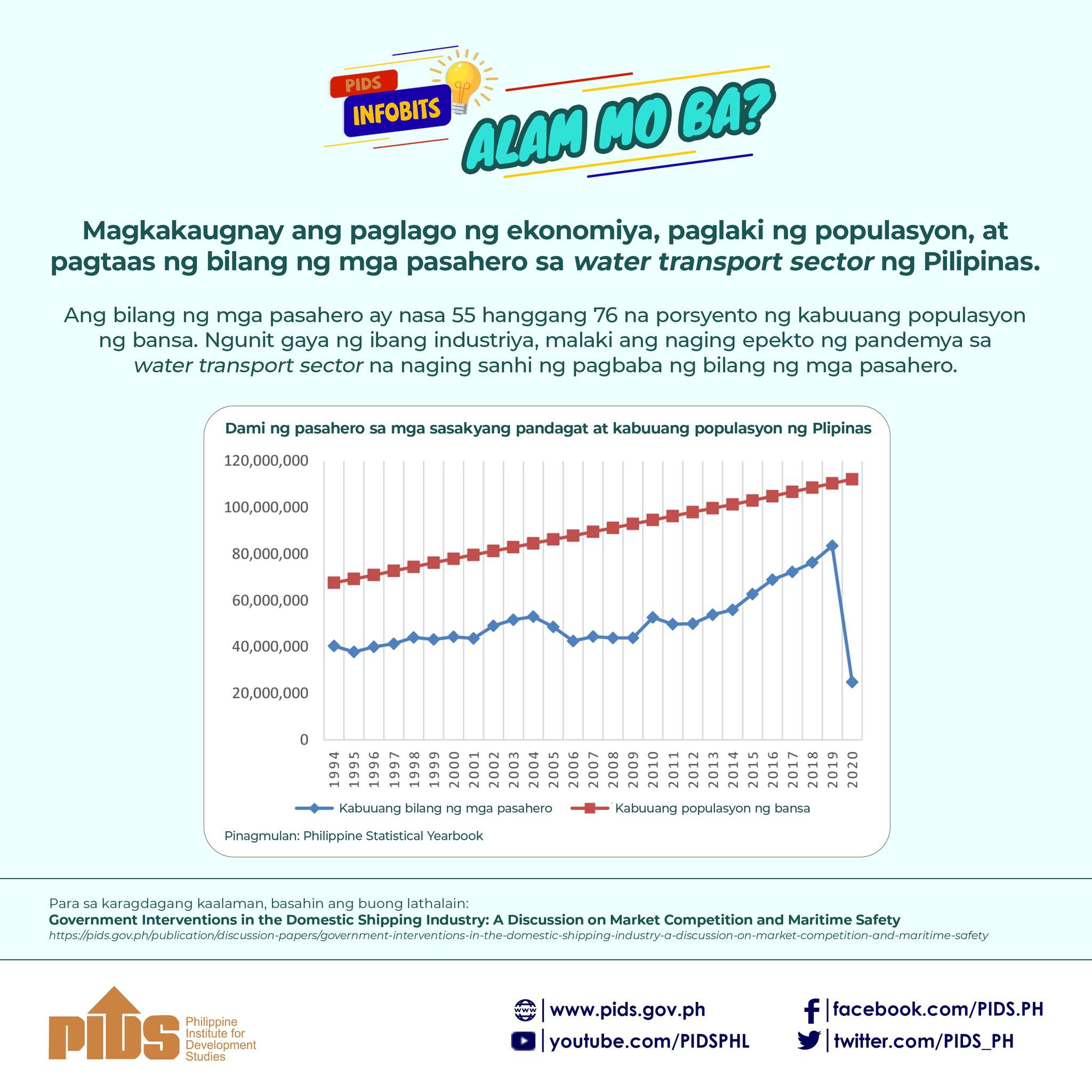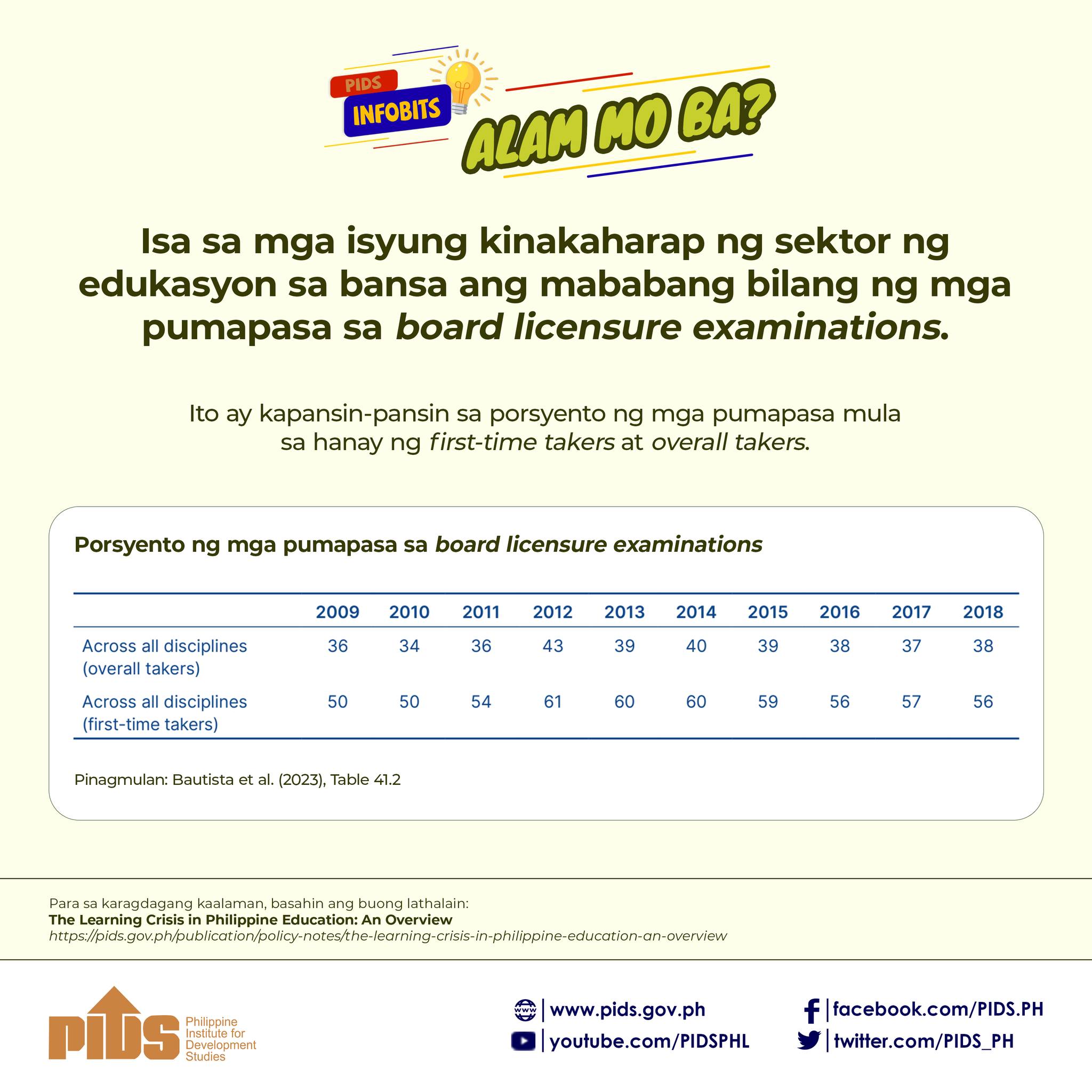QUEZON CITY, April 14 -- A large number of Filipino children have untimely vaccination, a study of state think-tank Philippine Institute for Development Studies (PIDS) revealed.
PIDS Research Fellow Valerie Gilbert Ulep and Supervising Research Specialist Jhanna Uy, authors of the research paper “Too Early, Too Late: Timeliness of Child Vaccination in the Philippines”, examined the immunization coverage and the extent of timely vaccination among Filipino children in the last 25 years, particularly from 1993 to 2017, using six rounds of the National Demographic and Health Survey, a nationally representative household survey.
Specifically, they looked into the routine basic immunization given to children which include Bacillus Calmette-Guerin, Oral Polio Vaccine, Diphtheria Pertussis and Tetanus (DPT), and measles vaccines. The administration of these vaccines is part of the expanded program on immunization (EPI) in the Philippines, which is lodged under the Department of Health.
Based on their findings, only 10 percent of Filipino children were able to receive complete and timely immunization.
“Vaccination has made the most significant contribution to the prevention of infectious diseases in the past century,” the authors explained. Through the EPI, infants and families are given access to safe and effective vaccines to protect them against common but vaccine-preventable diseases.
However, Ulep and Uy cautioned that “immunizing too early or too late decreases the ability of the vaccines to prevent targeted diseases.”
Further, they stressed that “untimely vaccination has been the cause of infectious disease outbreaks in several countries” despite having a high immunization coverage.
They cited China, Israel, and Russia as countries with a vaccine coverage of more than 95 percent but have experienced measles outbreaks among their young children due to untimely immunization.
Another important finding of the study is the fluctuation in the coverage of routine childhood vaccination over the last 25 years.
According to the authors, the basic vaccination coverage in the Philippines dipped to 65 percent in 2014, the lowest level since 1990. However, there was a slight recovery in 2016 where 70 percent of children aged 12 to 24 months have completed all basic vaccinations.
The study also found that the provision of routine childhood vaccination is predominantly delivered through public facilities. About 95 percent of vaccinated children received their immunization through public health centers despite the large and increasing number of private facilities.
The authors said that children of richer households or those belonging to the top 20 percent were more likely to have acquired their vaccines from private facilities while those from poorer families may have likely obtained their vaccines from public facilities.
However, they noted that in general, the timeliness of administration of vaccines included in the routine basic immunization remains low regardless of socioeconomic status.
“In 2017, only 10.5 percent of children from the top 20 percent and 9.2 percent of children from the bottom 60 percent have all their vaccines and doses administered on time,” they said.
According to the authors, the weak performance of the country’s EPI is caused by potential drivers, which they categorized into three—supply-related, demand-related, and contextual factors.
The supply side refers to the shortages and delays in the procurement and distribution of vaccines, resulting in untimely immunization of children. As an example, the authors mentioned that in 2001 and 2012, the United States experienced shortages in DPT and measles vaccines that resulted in high levels of untimely and under-coverage immunization.
Meanwhile, the demand side pertains to the attitudes and practices of parents and caregivers toward immunization, which can greatly affect the coverage and timely administration of vaccines to children. According to the authors, there was a staggering decline in vaccine confidence among parents from 2016 to 2018.
Also, data from other countries showed that there is a growing number of parents practicing “alternative vaccination schedules” because of vaccine hesitancy.
Contextual factors such as geographic distance, financial affordability, and cultural acceptability of immunization services can also make it difficult for parents and caregivers to access the immunization program.
To address issues on the supply side, the authors recommended the redesigning of the vaccine supply chain “by shifting from a state-run supply chain management, which is proven to be highly inefficient, to innovative modalities such as private sector outsourcing”.
They also urged the EPI to consider expanding its service delivery channel to private facilities. “In the Philippines, half of health facilities are privately-owned. The large network of private facilities can be used as a mechanism to rapidly expand coverage and promote timely vaccination,” they explained. However, they said that the expansion of service delivery to the private sector would entail shifting the current health financing modality of the EPI. (PIDS)
PIDS Research Fellow Valerie Gilbert Ulep and Supervising Research Specialist Jhanna Uy, authors of the research paper “Too Early, Too Late: Timeliness of Child Vaccination in the Philippines”, examined the immunization coverage and the extent of timely vaccination among Filipino children in the last 25 years, particularly from 1993 to 2017, using six rounds of the National Demographic and Health Survey, a nationally representative household survey.
Specifically, they looked into the routine basic immunization given to children which include Bacillus Calmette-Guerin, Oral Polio Vaccine, Diphtheria Pertussis and Tetanus (DPT), and measles vaccines. The administration of these vaccines is part of the expanded program on immunization (EPI) in the Philippines, which is lodged under the Department of Health.
Based on their findings, only 10 percent of Filipino children were able to receive complete and timely immunization.
“Vaccination has made the most significant contribution to the prevention of infectious diseases in the past century,” the authors explained. Through the EPI, infants and families are given access to safe and effective vaccines to protect them against common but vaccine-preventable diseases.
However, Ulep and Uy cautioned that “immunizing too early or too late decreases the ability of the vaccines to prevent targeted diseases.”
Further, they stressed that “untimely vaccination has been the cause of infectious disease outbreaks in several countries” despite having a high immunization coverage.
They cited China, Israel, and Russia as countries with a vaccine coverage of more than 95 percent but have experienced measles outbreaks among their young children due to untimely immunization.
Another important finding of the study is the fluctuation in the coverage of routine childhood vaccination over the last 25 years.
According to the authors, the basic vaccination coverage in the Philippines dipped to 65 percent in 2014, the lowest level since 1990. However, there was a slight recovery in 2016 where 70 percent of children aged 12 to 24 months have completed all basic vaccinations.
The study also found that the provision of routine childhood vaccination is predominantly delivered through public facilities. About 95 percent of vaccinated children received their immunization through public health centers despite the large and increasing number of private facilities.
The authors said that children of richer households or those belonging to the top 20 percent were more likely to have acquired their vaccines from private facilities while those from poorer families may have likely obtained their vaccines from public facilities.
However, they noted that in general, the timeliness of administration of vaccines included in the routine basic immunization remains low regardless of socioeconomic status.
“In 2017, only 10.5 percent of children from the top 20 percent and 9.2 percent of children from the bottom 60 percent have all their vaccines and doses administered on time,” they said.
According to the authors, the weak performance of the country’s EPI is caused by potential drivers, which they categorized into three—supply-related, demand-related, and contextual factors.
The supply side refers to the shortages and delays in the procurement and distribution of vaccines, resulting in untimely immunization of children. As an example, the authors mentioned that in 2001 and 2012, the United States experienced shortages in DPT and measles vaccines that resulted in high levels of untimely and under-coverage immunization.
Meanwhile, the demand side pertains to the attitudes and practices of parents and caregivers toward immunization, which can greatly affect the coverage and timely administration of vaccines to children. According to the authors, there was a staggering decline in vaccine confidence among parents from 2016 to 2018.
Also, data from other countries showed that there is a growing number of parents practicing “alternative vaccination schedules” because of vaccine hesitancy.
Contextual factors such as geographic distance, financial affordability, and cultural acceptability of immunization services can also make it difficult for parents and caregivers to access the immunization program.
To address issues on the supply side, the authors recommended the redesigning of the vaccine supply chain “by shifting from a state-run supply chain management, which is proven to be highly inefficient, to innovative modalities such as private sector outsourcing”.
They also urged the EPI to consider expanding its service delivery channel to private facilities. “In the Philippines, half of health facilities are privately-owned. The large network of private facilities can be used as a mechanism to rapidly expand coverage and promote timely vaccination,” they explained. However, they said that the expansion of service delivery to the private sector would entail shifting the current health financing modality of the EPI. (PIDS)


